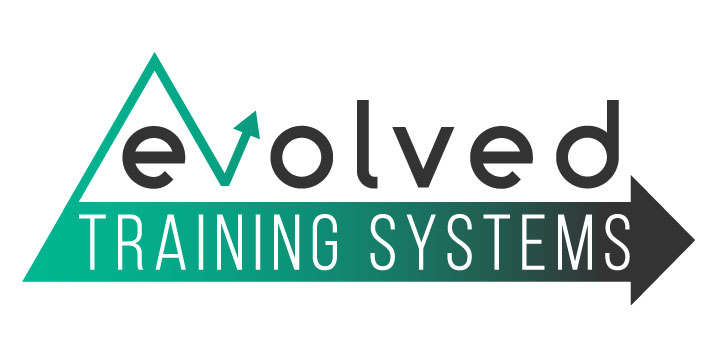The new cycles of training on the Evolved Programs focus on a combination of volume, strength and muscular endurance.
The prior 10-weeks of training consisted of a 5-week “metabolite” phase (high volume, high intensity) followed by a 5-week “strength” phase (lower volume, all straight sets; recovery).
The 5-week strength phase sets us up optimally for a great year of training. In effect, the Strength phase acted as the culmination of the prior year, and now we embark on a brand new year of making gains!
The new cycle will appear similar to older Evolved programming while also incorporating many of the new progression models that we have been utilizing in the more recent cycles.
Each program will have four training days and one optional day on Saturday (mostly conditioning and core work). To optimize recovery and performance, the training will consist of two strength-focus days to start the week (mostly 6-10 rep sets), and then two high rep “volume and muscular endurance” days to finish the week.
The early part of the week will be heavier and more taxing on the central nervous system (CNS), while the latter part of the week will be more difficult muscularly and cardiovascularly; providing some relief for the CNS and an adaptation period before the heavy weights again the following week.
One of my biggest tenets when it comes to programming is the use of Metric-Based Movements. These are exercises that repeat each week in a similar capacity. The volume, loading and rep ranges can be manipulated with periodization, but these base movements will be our guiding light to ensure the program is working.
Please carefully read the below information. If you understand how to implement the progression model, combined with the “Reps in Reserve” for these exercises, it will enhance your progress this cycle (it will still work very well if you don’t get this just right, but we are in the business of optimization!)
Progression Protocol for the REPEATING Movements
Choose a weight that will get you to the top half of the rep range provided with the target “Reps in Reserve” (RIR – see below for more on Reps in Reserve). You should expect the reps to decrease set to set as a result of fatigue accumulation
EXAMPLE (assume rep range of 6-12)
You may achieve Reps of 11-9-8 across 3 sets
In subsequent weeks, INCREASE weight on ALL SETS if your FIRST set threatens to top out the rep range
EXAMPLE (assume rep range of 6-12)
If you achieve 11 or 12 reps on the FIRST set, you will add weight for ALL sets the following week, at which point your reps will probably decrease and you will then build back up towards the top of the rep range.
REPS IN RESERVE (RIR)
Reps in Reserve are a subjective judgement of how close you will take a set to TECHNICAL FAILURE (the inability to perform another rep with quality form).
This is often difficult for athletes to master until they have purposefully trained in this manner for a few months. Not to worry…
Ultimately, the most important part is that you begin “week 1” with a load that is shy of REALLY GRUELING, and then each week you will progressively take sets closer to GRUELING, such that the final week you approach technical failure.
The reason we do this is because science has repeatedly demonstrated that there is only a very small return for going closer to failure (asymptote graph), while fatigue rises exponentially with each rep closer to failure. This is why it is important to take a planned DELOAD WEEK after the hardest week of training.
In this current cycle, there will be 4-5 weeks of accumulation. The objective is to begin this 4-5 week period with about 3 RIR. This is still a hard set of training, but allows you to build momentum week to week.
This process of getting closer proximity to failure should happen naturally as you will need to add weight to stay within the rep range provided.
EXAMPLE
Think about the athlete in the example above, where they achieved 11-9-8 reps in week 1. In theory, if this athlete was training at 2-3 RIR, they should be able to add weight the next week and also match the same reps as the prior week (by getting slightly closer to failure). Then, they are still at the top of the rep range, so they will need to add weight the following week, as well. This will move them slightly closer to failure. And so it goes on similarly until the end of the mesocycle.
The Different Evolved Programs
The Physique programs will continue to use the time to prioritize more training volume. This means that there will be no specific conditioning programmed (other than the optional Saturday stuff).
You are encouraged to move throughout the day and try to accumulate 8-10k steps. The best part of the physique programs is the ability to add your preferred conditioning work. You can go outside and run, hike, bike, or play sports instead of having to do cardio in the gym. You could also opt to skip cardio and control your caloric intake a bit more. The physique programs allow for lots of flexibility in this regard (and it is also extremely beneficial for both bulking and cutting periods of training).
The Original Evolved Program will incorporate conditioning work into its basic structure. This means SLIGHTLY less controlled lifting; but there will absolutely be “resistance training” within the conditioning work.
The Original Evolved Program will often combine submaximal efforts of bodyweight and loaded movements with different cardiovascular tools to illicit a specific response. These are super fun, and can break up the monotony of “just lifting” for many people.
Either way, it’s gonna be an awesome year of training, and we are super amped to have you training with Evolved!




